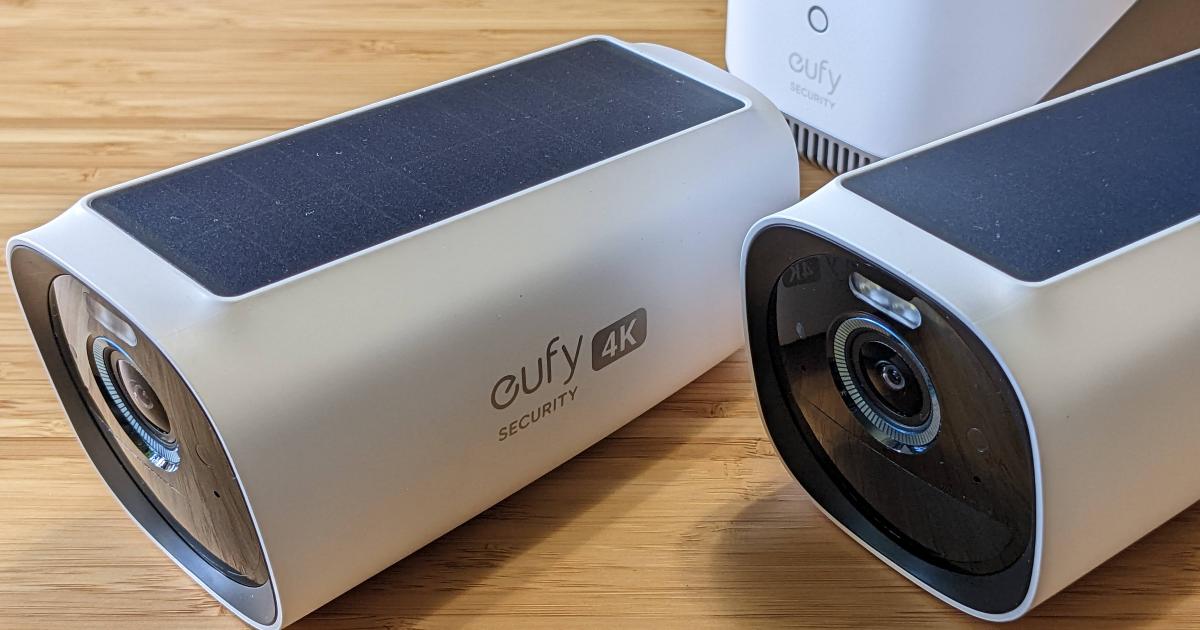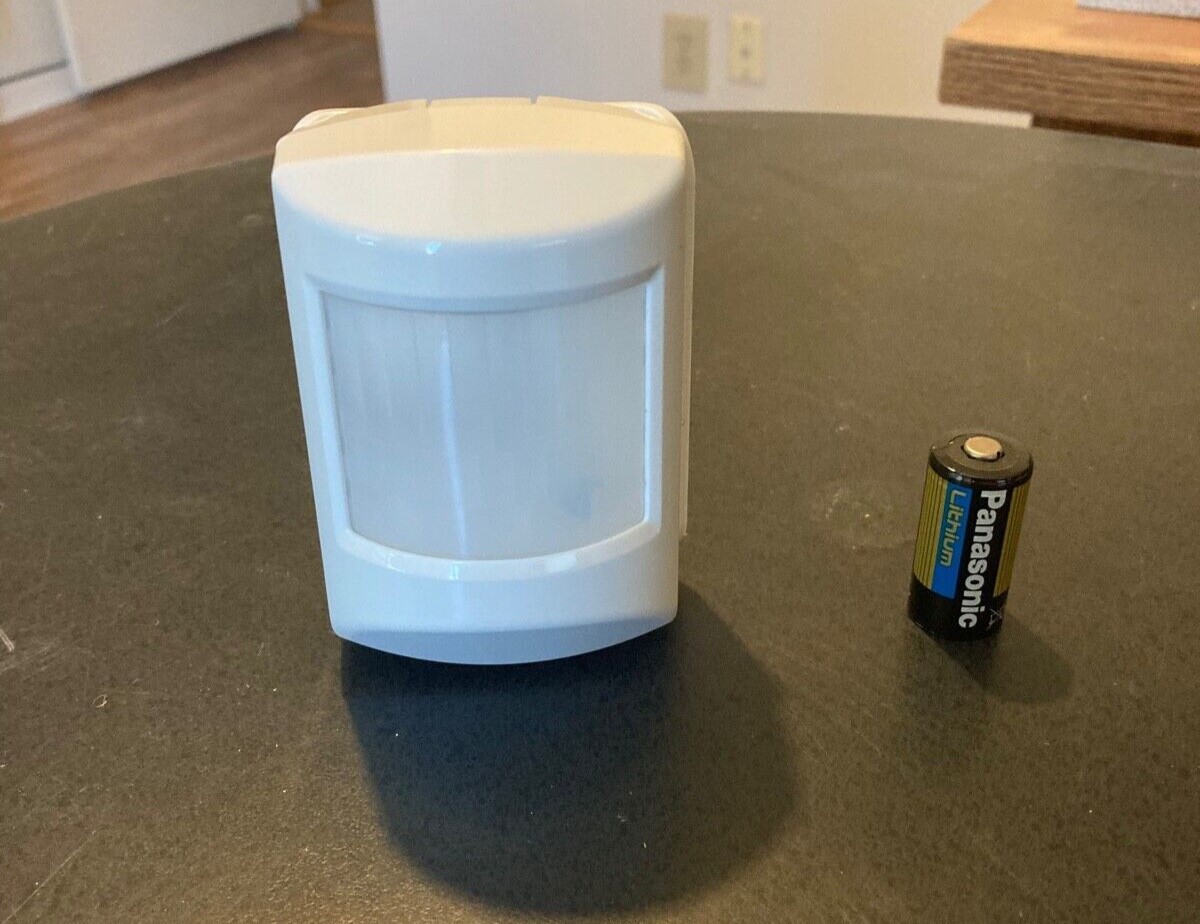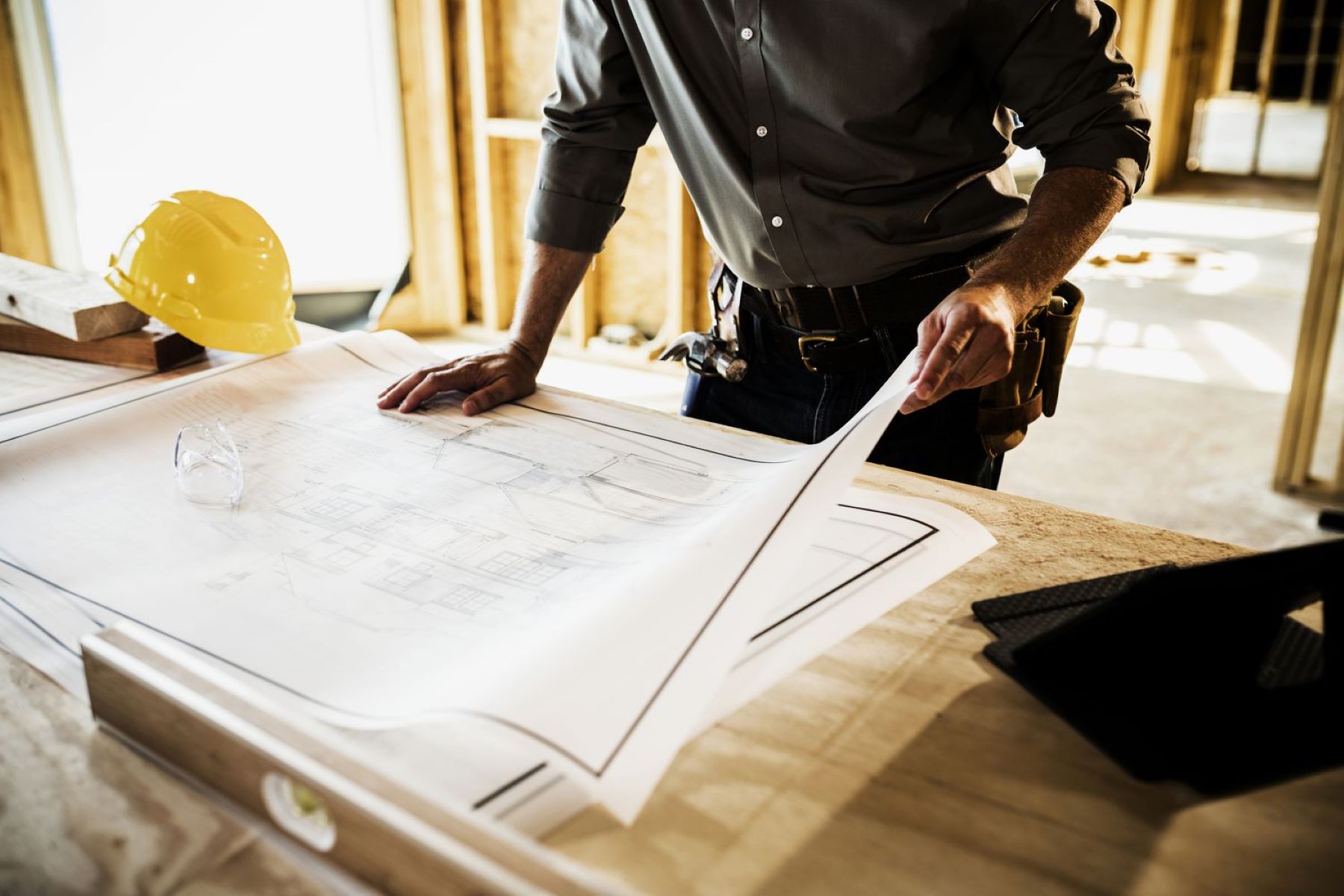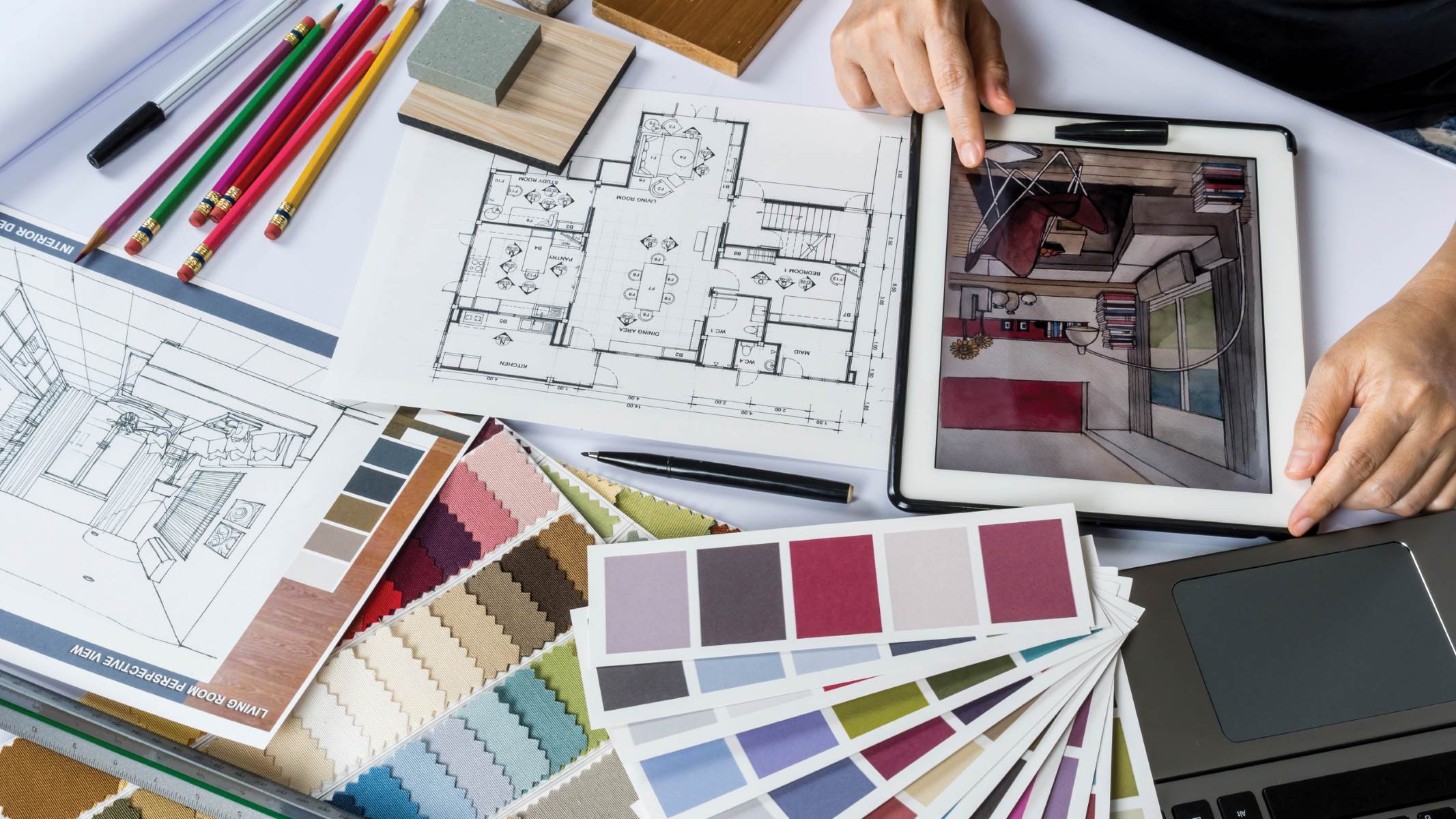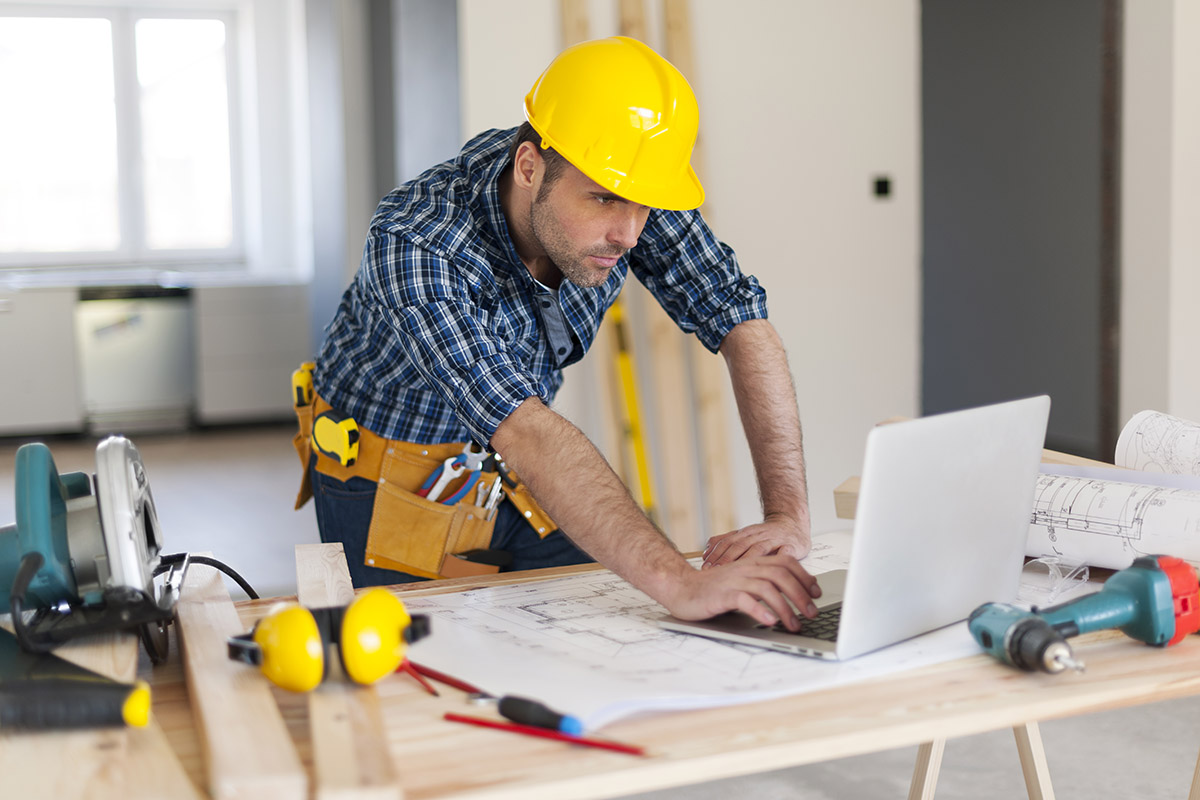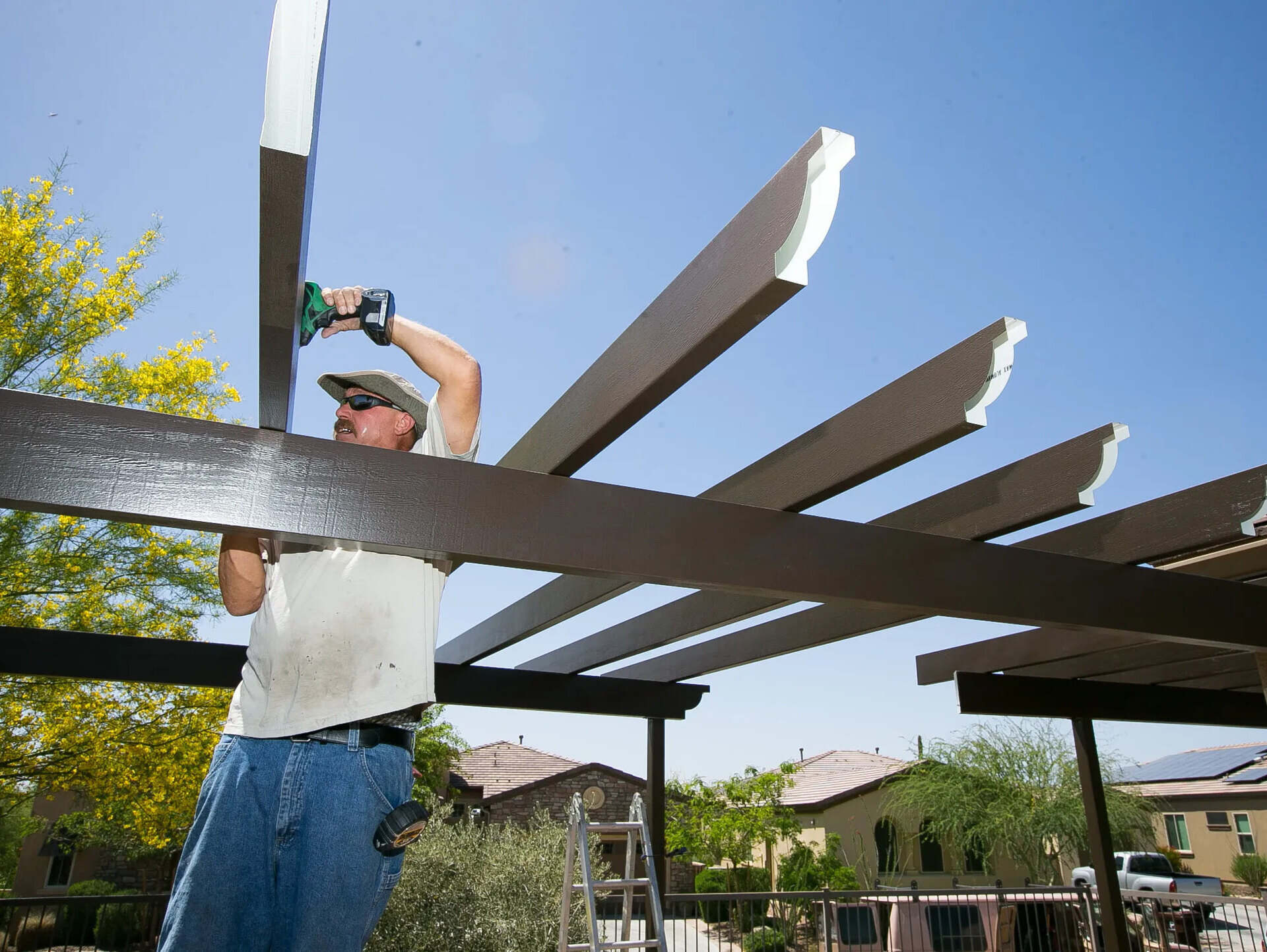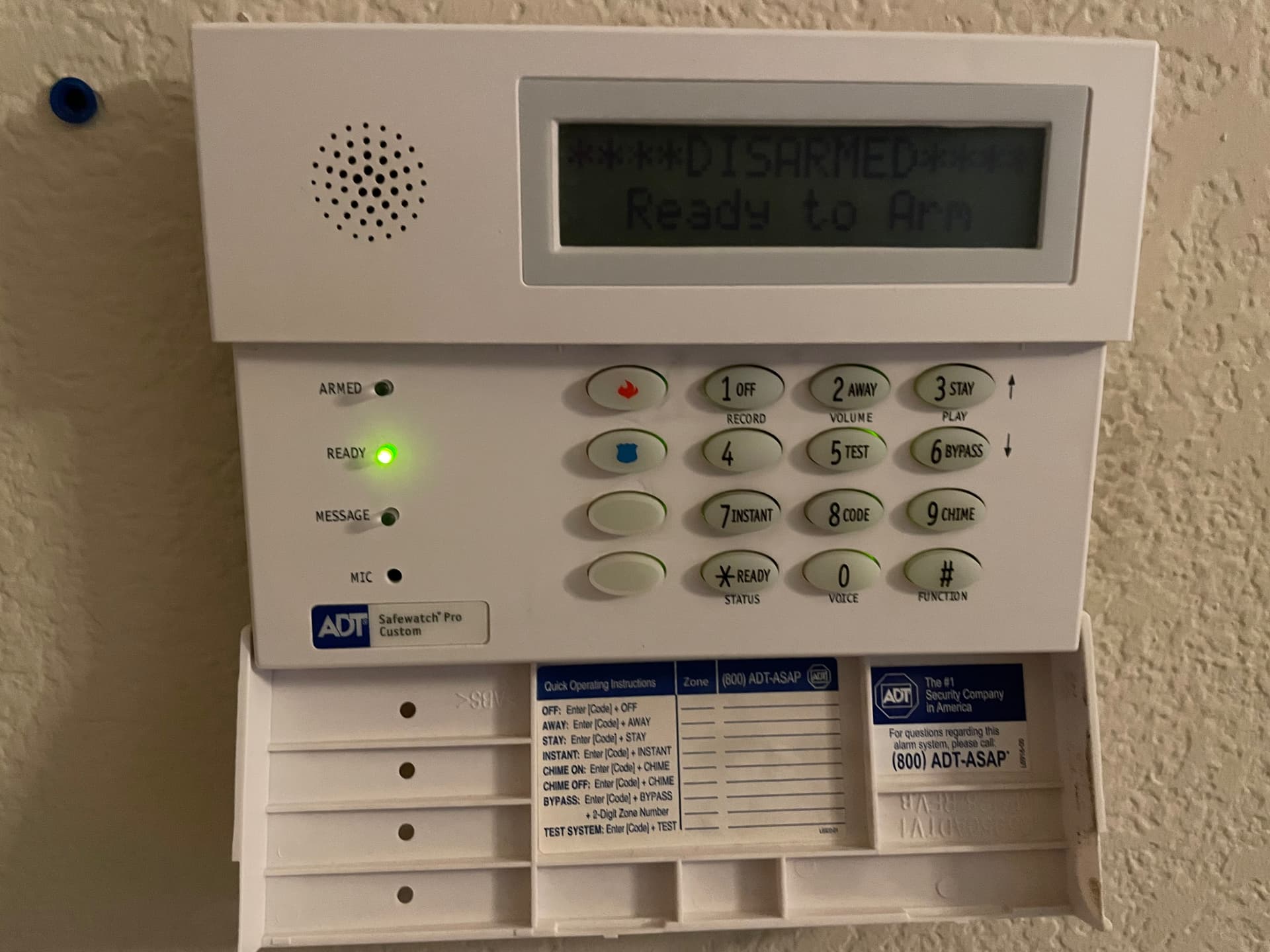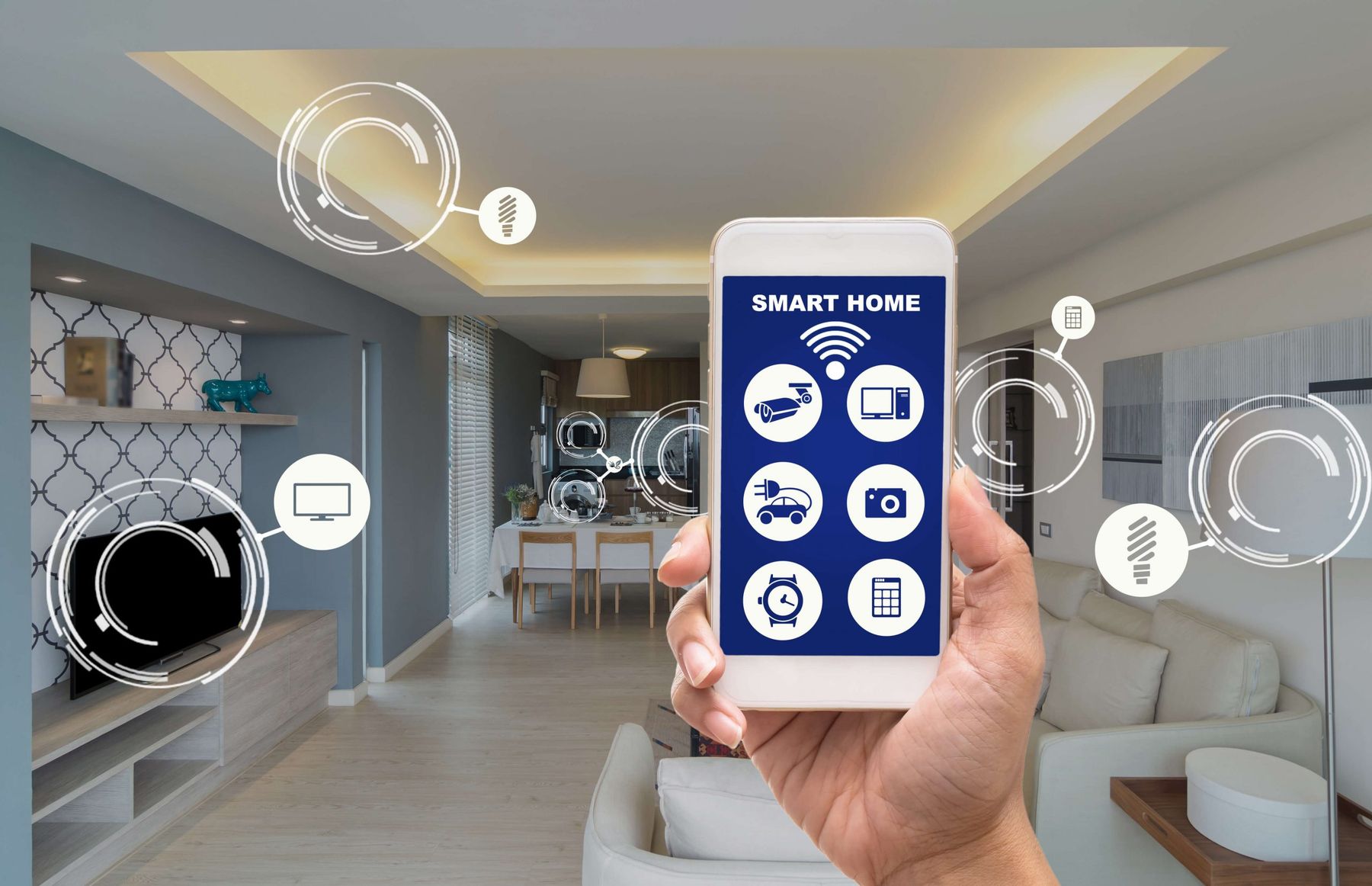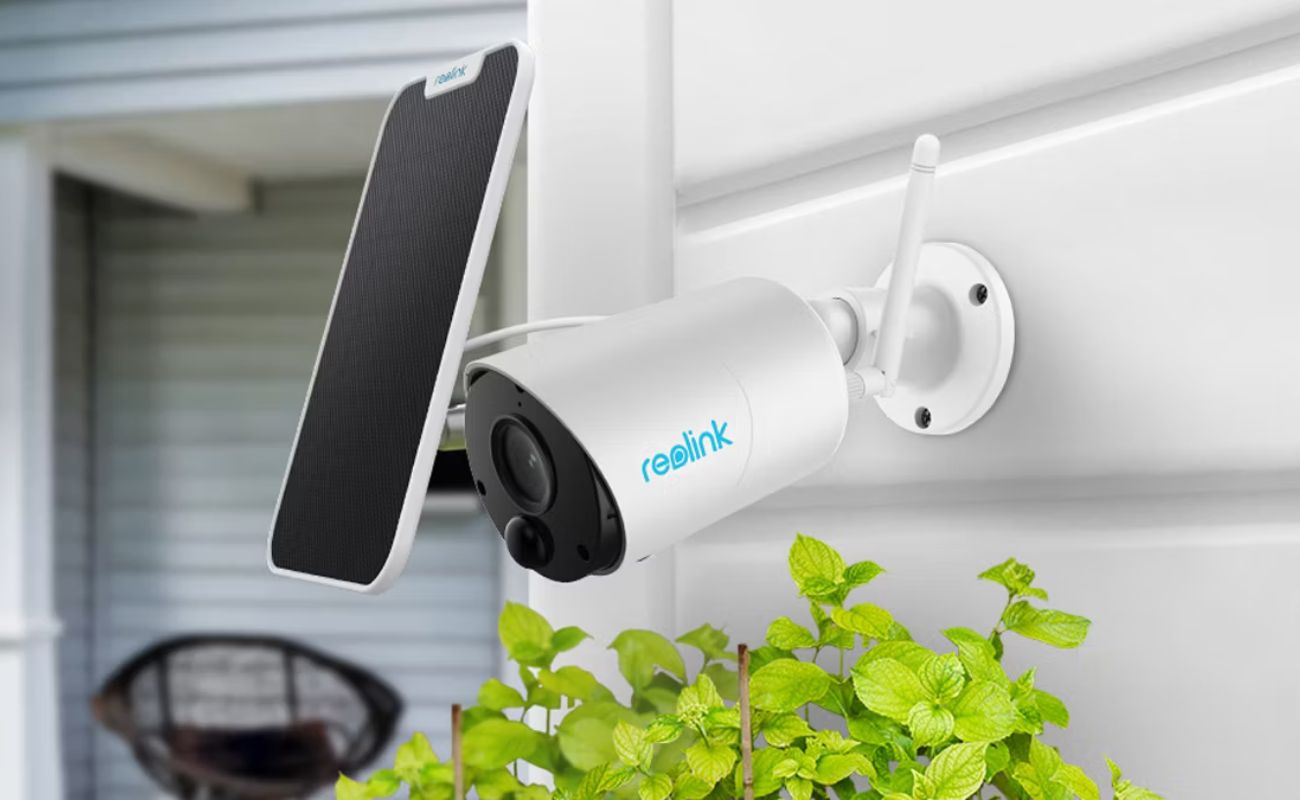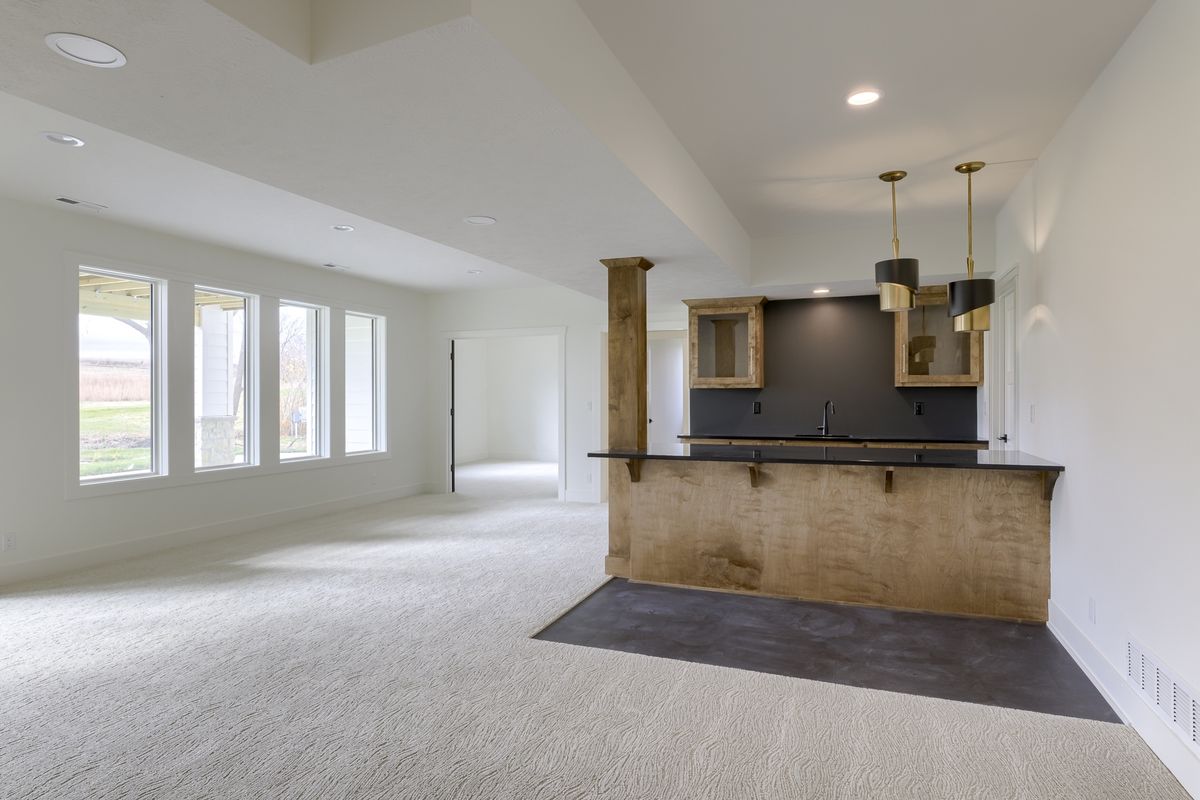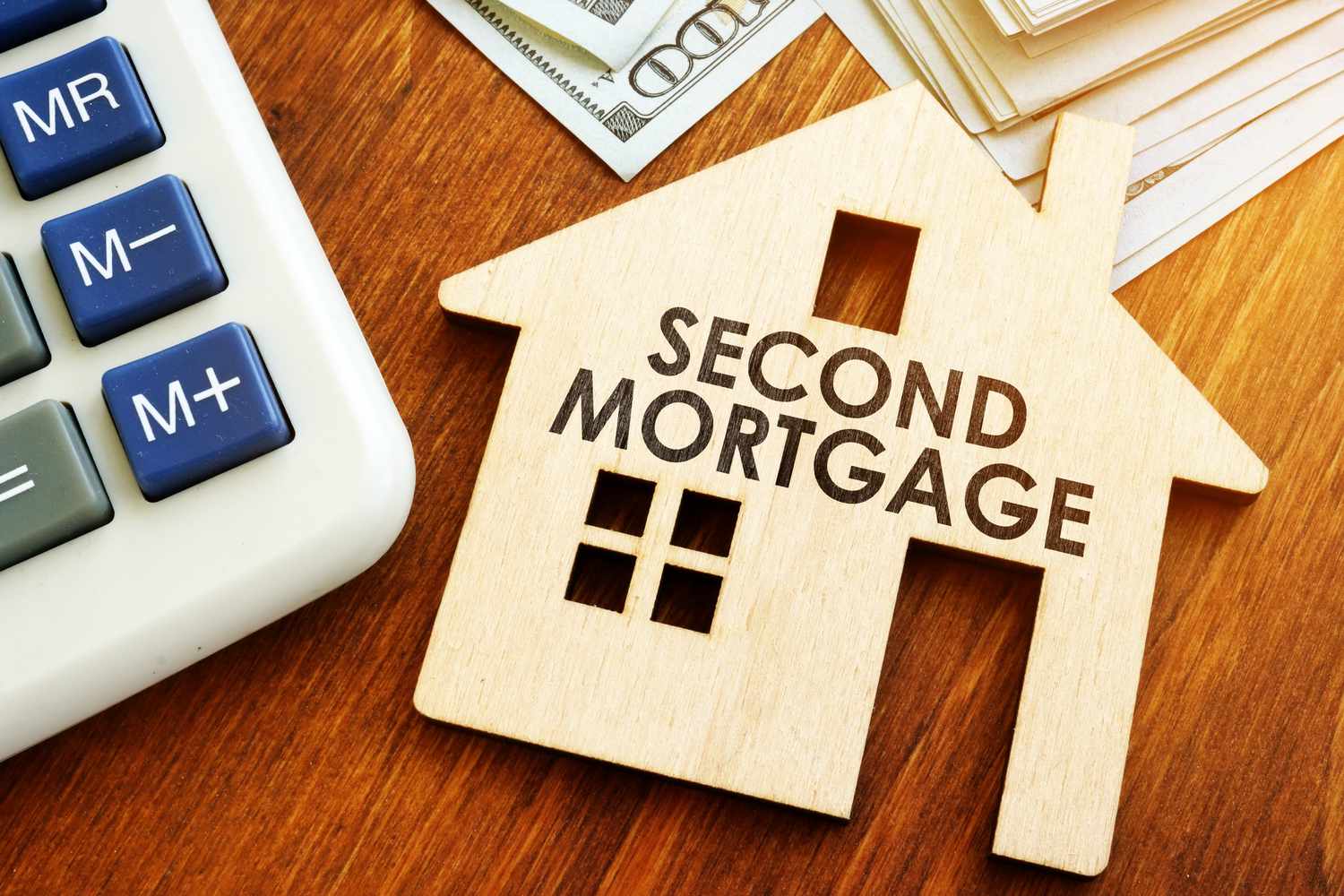Home>Home Maintenance>What Are The Requirements Of The Beyond Housing Home Repair Program
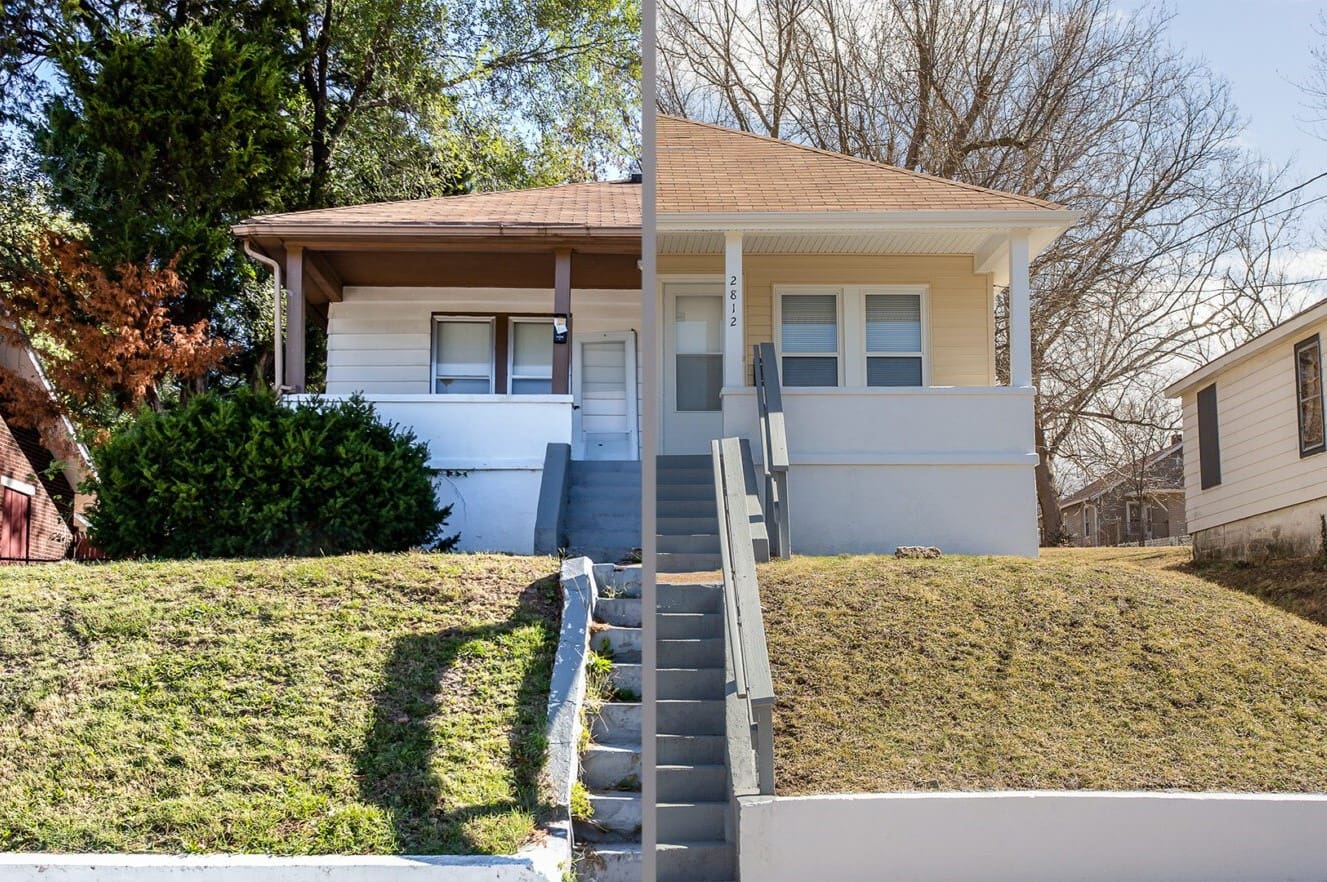

Home Maintenance
What Are The Requirements Of The Beyond Housing Home Repair Program
Modified: October 20, 2024
Learn about the requirements of the Beyond Housing Home Repair Program for affordable home maintenance. Find out if you qualify for this assistance today.
(Many of the links in this article redirect to a specific reviewed product. Your purchase of these products through affiliate links helps to generate commission for Storables.com, at no extra cost. Learn more)
Introduction
Welcome to the Beyond Housing Home Repair Program! This program aims to assist homeowners in maintaining and improving their homes, ensuring that they remain safe, comfortable, and in good condition. Whether you need minor repairs or major renovations, the Beyond Housing Home Repair Program is here to support you.
Home maintenance is an ongoing responsibility for homeowners, and unexpected repairs can quickly become a financial burden. Recognizing the importance of a safe and well-maintained home, Beyond Housing has developed this program to address the needs of homeowners who may not have the resources to tackle these repairs on their own.
Through the Beyond Housing Home Repair Program, eligible homeowners can access financial assistance and professional guidance to carry out a wide range of repairs, including structural issues, plumbing and electrical problems, roofing repairs, weatherization, and much more. We understand that every home is unique, and we strive to provide tailored solutions that meet the specific needs of each homeowner.
Our mission is to empower homeowners to take proactive steps in maintaining their homes, ensuring they can continue to provide a safe and comfortable environment for themselves and their families. By addressing these repairs and renovations, we believe that homeowners can enjoy improved quality of life and increased property values.
In this article, we will provide an in-depth overview of the Beyond Housing Home Repair Program, including the eligibility criteria, the types of repairs covered, the application process, the funding options available, and much more. So, let’s dive in and explore how this program can make a positive impact on your home and your life!
Key Takeaways:
- The Beyond Housing Home Repair Program offers financial assistance and professional guidance to help homeowners address critical repairs, enhance energy efficiency, and create safe and comfortable living spaces.
- Homeowners should carefully review the program’s limitations, select the best repayment option, and consider partnering with approved contractors to efficiently complete their repairs or renovations.
Program Overview
The Beyond Housing Home Repair Program is designed to assist homeowners in addressing necessary repairs and renovations to their homes. The program provides financial assistance and access to reliable contractors who can complete the repairs efficiently and effectively.
One of the key goals of the program is to ensure that homeowners can live in safe and healthy environments. By addressing critical repairs, such as fixing structural issues, repairing faulty plumbing or electrical systems, or replacing worn-out roofing materials, the program helps homeowners create a secure and comfortable living space.
The Beyond Housing Home Repair Program also focuses on energy efficiency and weatherization. Through the program, homeowners can make upgrades to improve insulation, seal air leaks, and upgrade appliances to reduce energy consumption and lower utility bills. These improvements not only benefit the homeowner financially but also contribute to a more sustainable and environmentally-friendly community.
Furthermore, the program aims to enhance the overall quality of life for homeowners. By addressing necessary repairs and renovations, homeowners can enjoy a sense of pride in their well-maintained homes. They can also create spaces that better meet their needs, such as modifying their homes to accommodate mobility challenges or making necessary modifications for aging in place.
Overall, the Beyond Housing Home Repair Program is a comprehensive initiative that addresses a variety of repair and maintenance needs. From critical repairs to energy efficiency upgrades and making homes more accessible, the program strives to meet the diverse needs of homeowners in our community.
By partnering with homeowners and providing financial assistance, the program seeks to create lasting improvements that positively impact the lives of individuals and families. The ultimate goal is to strengthen communities by ensuring that homeowners have the resources they need to maintain and improve their homes, thereby fostering pride and stability.
Eligibility Criteria
To qualify for the Beyond Housing Home Repair Program, homeowners must meet certain eligibility criteria. These criteria help ensure that the program can prioritize those who are most in need of assistance and use available resources effectively. The eligibility criteria include the following:
- Income Requirements: Applicants must demonstrate financial need by meeting specific income requirements. The program sets income limits based on the size of the household and takes into account the total household income. These limits may vary depending on the location and funding available.
- Residency Requirements: Applicants must be permanent residents or citizens of the United States and must be able to provide supporting documentation to establish their residency status.
- Home Ownership Requirements: The program is available only to homeowners, not renters. Applicants must provide proof of ownership of the property for which they are seeking assistance. This can include property deeds, mortgage statements, and other relevant documents.
- Property Requirements: The program focuses on assisting homeowners with primary residences. Second homes, vacation properties, and rental properties are generally not eligible for the Beyond Housing Home Repair Program.
- Priority Consideration: In some cases, the program may prioritize applicants who fall into specific categories, such as elderly homeowners, individuals with disabilities, or families with young children. This is to ensure that those with the greatest need receive assistance in a timely manner.
It is important to note that meeting these eligibility criteria does not guarantee approval for assistance through the program. The Beyond Housing Home Repair Program receives a high volume of applications, and selection is based on several factors, including the availability of funding, the urgency of repairs needed, and the overall impact on the homeowner’s well-being.
If an applicant meets the eligibility criteria and is selected for the program, they will receive financial assistance for the approved repairs or renovations. However, it is essential to keep in mind that program funding is limited, and not all applicants may receive assistance immediately. It is advisable to submit an application as soon as possible and to provide all the necessary documentation to increase the chances of being selected for the program.
By ensuring that applicants meet the eligibility criteria, the Beyond Housing Home Repair Program can effectively target those who require assistance the most. This helps maximize the impact of the program and ensure that limited resources are utilized efficiently.
Income Requirements
The Beyond Housing Home Repair Program uses income requirements as an eligibility criterion to determine financial need and prioritize those who require assistance the most. These requirements are based on the total household income and are set to ensure that limited program resources are allocated to those in need.
The income requirements for the program vary depending on the location and available funding sources. These requirements are typically determined based on the Area Median Income (AMI) for the specific region or locality. The AMI represents the middle point of all incomes in a particular area, with half of the incomes being higher and half being lower.
The Beyond Housing Home Repair Program sets income limits as a percentage of the AMI. For example, the program may establish that households with incomes at or below 80% of the AMI are eligible for assistance. However, it is crucial to note that these income limits may differ based on family size, so larger households can have slightly higher income limits.
To determine eligibility based on income, applicants are required to provide documentation of their total household income. This documentation can include recent tax returns, pay stubs, benefit statements, or any other relevant income verification documents. It is essential to provide accurate and up-to-date information to ensure the application is processed correctly.
It is important to note that meeting the income requirements does not automatically guarantee approval for assistance through the program. The Beyond Housing Home Repair Program has limited funding and may receive a high volume of applications. Therefore, meeting the income requirements is only one aspect of the overall evaluation process.
Applicants should keep in mind that income requirements may change periodically due to factors such as changes in funding availability or updates to the AMI. Therefore, it is advisable to check the program’s website or contact the program team directly for the most up-to-date information regarding income requirements.
By using income requirements as part of the eligibility criteria, the Beyond Housing Home Repair Program ensures that assistance is directed to those who need it the most. This helps target resources appropriately and maximize the positive impact on homeowners and their communities.
Residency Requirements
The Beyond Housing Home Repair Program has residency requirements that determine eligibility for assistance. These requirements are in place to ensure that the program is serving homeowners who are permanent residents or citizens of the United States.
To qualify for the program, applicants must be able to provide documentation that establishes their residency status. This documentation may include government-issued identification, such as a driver’s license or a state-issued ID card. Additionally, applicants may be required to provide proof of residency, such as utility bills, rental agreements, or other official documents that show their address.
The residency requirements are in place to ensure that the program is supporting homeowners who are legally residing in the United States. This not only aligns with program guidelines but also allows the program to utilize available resources in an appropriate and responsible manner.
It is important for applicants to provide accurate and up-to-date residency documentation to avoid any delays in the application process. Failure to provide sufficient documentation may result in the application being deemed incomplete and not considered for assistance through the program.
In cases where applicants are unable to provide the necessary residency documents, it is advisable to contact the Beyond Housing Home Repair Program directly. They may be able to provide guidance or alternative options for establishing residency eligibility.
By implementing residency requirements, the Beyond Housing Home Repair Program ensures that assistance is directed to homeowners who are permanent residents or citizens of the United States. This helps maintain program integrity, support those who are legally residing in the country, and effectively utilize program resources to maximize their impact.
Home Ownership Requirements
The Beyond Housing Home Repair Program has specific home ownership requirements to determine eligibility for assistance. These requirements help ensure that the program is targeted towards homeowners who have legal ownership of the property for which they are seeking repair or renovation assistance.
Applicants must provide proof of ownership, which can include documents such as property deeds, mortgage statements, or other official records that establish their ownership of the home. It is important to provide accurate and up-to-date documentation to avoid any delays in the application process.
The program focuses on assisting homeowners with their primary residences. Second homes, vacation properties, and rental properties are generally not eligible for the Beyond Housing Home Repair Program. The program’s primary objective is to support homeowners who reside in and maintain their primary homes on an ongoing basis.
Furthermore, the program may have restrictions on the type of properties that are eligible for assistance. For example, properties that are part of certain federally subsidized housing programs or properties subject to certain legal restrictions may not be eligible for the program. It is vital to review the program guidelines or contact the program directly to determine if your property meets the eligibility requirements.
It is important to note that meeting the home ownership requirements alone does not guarantee approval for assistance through the program. The Beyond Housing Home Repair Program receives a high volume of applications, and selection is based on several factors, including the availability of funding and the urgency of repairs needed.
If an applicant meets the home ownership requirements and is selected for the program, they will receive financial assistance for the approved repairs or renovations. It is advisable to submit an application as soon as possible and provide all the required documentation to increase the chances of being selected for the program.
By implementing home ownership requirements, the Beyond Housing Home Repair Program ensures that assistance is directed to homeowners who have legal ownership of their primary residences. This helps maintain program integrity and effectively targets resources to those who are in need of repair or renovation assistance.
Types of Repairs Covered
The Beyond Housing Home Repair Program provides assistance for a wide range of repairs and renovations to help homeowners maintain and improve their homes. The program covers various types of repairs to ensure that homeowners’ needs are addressed comprehensively. Some of the common repairs covered by the program include:
- Structural Repairs: The program can help with repairs related to the structural integrity of a home. This may include foundation repairs, fixing cracked walls or ceilings, reinforcing load-bearing walls, or addressing issues with the roof structure.
- Plumbing and Electrical Repairs: Homeowners can receive assistance with repairing or replacing plumbing and electrical systems. This may involve fixing leaky pipes, replacing outdated electrical wiring, or repairing faulty electrical outlets.
- Roofing Repairs: The program recognizes the importance of a well-maintained roof in protecting the home. Assistance can be provided for repairing damaged roofs, fixing leaks, or replacing worn-out roofing materials.
- Weatherization: The Beyond Housing Home Repair Program aims to improve energy efficiency in homes. Weatherization repairs may include sealing air leaks, installing insulation, or upgrading windows and doors to optimize energy savings.
- Accessibility Modifications: The program acknowledges the importance of creating accessible living spaces. Homeowners may receive assistance with modifying their homes to accommodate mobility challenges, such as installing wheelchair ramps, widening doorways, or adding grab bars in bathrooms.
- Heating, Ventilation, and Air Conditioning (HVAC) Repairs: The program can help homeowners with repairing or replacing HVAC systems to ensure the comfort and livability of their homes.
- Health and Safety Repairs: The Beyond Housing Home Repair Program addresses health and safety concerns in homes. This may include addressing issues such as mold remediation, repairing faulty smoke detectors, or addressing problems with the home’s ventilation system.
It is important to note that the Beyond Housing Home Repair Program covers a wide range of repairs, but specific coverage may vary depending on the available funding and the needs of the homeowner. It is recommended to consult the program guidelines or contact the program directly to understand the full scope of repairs covered.
By offering assistance for various types of repairs, the Beyond Housing Home Repair Program aims to ensure that homeowners can maintain safe, comfortable, and well-functioning homes. These repairs not only enhance the quality of life for homeowners but also contribute to the overall well-being and stability of the community.
Application Process
The application process for the Beyond Housing Home Repair Program is designed to be straightforward and accessible to homeowners in need of repair or renovation assistance. Here are the steps involved in the application process:
- Step 1: Pre-Application: Before starting the official application process, it is advisable to complete a pre-application form. This form is typically available on the program’s website or can be obtained by contacting the program directly. The pre-application collects basic information about the homeowner and the type of repairs needed, allowing the program to determine initial eligibility.
- Step 2: Complete the Application: Once the pre-application is reviewed and it is determined that the homeowner meets the initial eligibility criteria, they will be provided with the official application form. This form requires more detailed information about the homeowner, the property, and the repairs needed. It is essential to provide accurate and complete information to ensure the application is processed correctly.
- Step 3: Submit Required Documentation: Along with the completed application form, applicants will need to provide supporting documentation to verify their eligibility. This may include documents such as proof of income, proof of residency, and proof of ownership. The program will provide a list of required documents, and it is important to submit them promptly to avoid any delays in the application process.
- Step 4: Application Review: Once the application and supporting documentation are received, the Beyond Housing Home Repair Program will review the materials. The review process may include verifying the eligibility criteria, evaluating the urgency of repairs needed, and assessing the impact on the homeowner’s well-being.
- Step 5: Selection and Notification: Based on the review process, the program will select applicants who meet the eligibility criteria and have demonstrated a genuine need for assistance. Selected homeowners will be notified about their acceptance into the program and provided with information about the next steps.
- Step 6: Contractor Selection: Once homeowners are accepted into the program, they will work closely with the Beyond Housing Home Repair Program to select a qualified and reliable contractor to perform the necessary repairs. The program typically has a list of approved contractors, ensuring that homeowners have access to professionals with the expertise needed for their specific repairs.
- Step 7: Project Completion: After selecting a contractor, the repairs or renovations can begin. The program will monitor the progress of the project to ensure it is completed efficiently and according to the established guidelines. The Beyond Housing Home Repair Program aims to ensure that the work is done to high standards, providing homeowners with the desired results.
It is important to note that the application process may vary slightly depending on the specific requirements and procedures of the Beyond Housing Home Repair Program in your area. It is advisable to consult the program’s website or contact the program directly for detailed instructions and guidance through the application process.
By following these steps, homeowners can navigate the application process and take a step towards securing the assistance they need to repair and improve their homes. The Beyond Housing Home Repair Program is committed to supporting homeowners throughout the application process and making the journey as seamless as possible.
Check the Beyond Housing website for the specific requirements of their Home Repair Program. They may include income limits, property ownership, and residency in the service area.
Documentation Needed
When applying for the Beyond Housing Home Repair Program, homeowners are required to submit certain documentation to verify their eligibility and provide necessary information about their property and the repairs needed. The following are the typical documents that may be needed during the application process:
- Proof of Income: Applicants must provide documentation that verifies their household income. This may include recent tax returns, pay stubs, benefit statements, or any other official documents that demonstrate their income. It is important to provide accurate and up-to-date income information to ensure the application is processed correctly.
- Proof of Residency: Applicants need to provide documentation that establishes their residency status. This can include government-issued identification, such as a driver’s license or a state-issued ID card, as well as documents that show their address, such as utility bills or rental agreements.
- Proof of Ownership: To demonstrate ownership of the property, applicants must provide documentation such as property deeds, mortgage statements, or other official records that establish their ownership. This ensures that the program is assisting homeowners who have legal ownership of their homes.
- Home Inspection Reports: In some cases, applicants may need to provide home inspection reports or assessments that identify the repairs needed. These reports help the program understand the scope and urgency of the repairs and ensure that they can be completed effectively.
- Estimates or Quotes: Homeowners may be asked to provide estimates or quotes from contractors for the repairs or renovations needed. These estimates help the program understand the cost and extent of the work and assist in the selection of qualified contractors.
- Other Relevant Documentation: Depending on the specific circumstances and the repairs needed, additional documentation may be required. This could include insurance documentation, court orders, or permits, among others. It is important to follow the program’s guidelines and provide any requested documents promptly.
It is crucial to gather and provide accurate and up-to-date documentation to support the application. Incomplete or incorrect documentation may lead to delays in the application process or potential disqualification. It is advisable to carefully review the program’s documentation requirements and ensure all necessary documents are included in the application.
If homeowners are unsure about any documentation requirements or have difficulty obtaining certain documents, it is recommended to contact the Beyond Housing Home Repair Program directly. Program staff can provide guidance and assistance in navigating the documentation process.
By providing necessary documentation, homeowners can help facilitate the application process and increase the chances of receiving timely assistance through the Beyond Housing Home Repair Program.
Read more: What Home Improvements Require A Permit?
Selection Process
The selection process for the Beyond Housing Home Repair Program is designed to ensure fairness and allocate available resources to homeowners who are most in need of repair or renovation assistance. The process involves carefully reviewing applications and considering various factors to determine eligibility for the program. Here is an overview of the selection process:
- Application Review: Once homeowners submit their completed applications and supporting documentation, the Beyond Housing Home Repair Program reviews each application carefully. This involves verifying eligibility based on income, residency, and home ownership requirements.
- Evaluation of Urgency: The program evaluates the urgency of the repairs needed by homeowners. Repairs that pose substantial risks to health, safety, or structural integrity are given priority. The program assesses the potential impact on homeowners’ well-being and the immediate need for assistance.
- Assessment of Funding Availability: The program considers the availability of funds and the budget allocated for the Beyond Housing Home Repair Program. Due to limited resources, not all eligible homeowners may receive assistance immediately. The program prioritizes those with the most urgent needs and the greatest financial need.
- Consideration of Special Circumstances: The program takes into account special circumstances that may affect homeowners’ eligibility or need for assistance. These circumstances can include the presence of elderly residents, individuals with disabilities, families with young children, or other factors that contribute to increased vulnerability and the need for immediate repairs.
- Selection Notification: Once the selection process is completed, homeowners who are approved for the Beyond Housing Home Repair Program are notified promptly. Selected homeowners receive information on the next steps in the process, such as contractor selection and project initiation.
It is important to note that meeting the eligibility criteria does not guarantee approval for assistance through the program. The selection process takes into account multiple factors, including the availability of funds, the urgency of repairs, and the potential impact on homeowners’ well-being.
If homeowners are not selected for the program initially, it is still advisable to remain engaged with the program. Funding availability may change over time, and additional opportunities for assistance may arise in the future.
The Beyond Housing Home Repair Program strives to provide equitable and fair assistance to homeowners in need. By carefully reviewing applications and considering various factors, the program aims to allocate resources effectively and make a positive impact on the lives of homeowners and their communities.
Program Funding
The Beyond Housing Home Repair Program relies on funding from various sources to provide assistance to homeowners in need of repair or renovation services. The program’s funding comes from a combination of government grants, private donations, and partnerships with local organizations. The availability of funding can vary from year to year, impacting the overall capacity of the program to provide assistance.
As a result of limited funding, the Beyond Housing Home Repair Program may not be able to accommodate all eligible homeowners immediately. The program prioritizes those with the most urgent needs and the greatest financial need, ensuring that resources are allocated to those who require immediate assistance. Remaining applicants may be placed on a waiting list until additional funding becomes available.
In addition to securing funding for repairs and renovations, the program may also offer financial counseling and access to low-interest or deferred payment loans for qualified homeowners. These financial resources help homeowners manage the costs associated with the repairs and ensure long-term affordability.
To sustain the program and expand its reach, the Beyond Housing Home Repair Program actively seeks partnerships and fundraising opportunities within the community. This collaborative approach helps increase the availability of resources and ensures ongoing support for homeowners in need.
It is important for homeowners to keep in mind that funding availability can change over time. Checking the program’s website or contacting the program directly is advisable for the most up-to-date information regarding available funding and their specific situation.
By effectively managing funding resources, securing grants and donations, and cultivating partnerships, the Beyond Housing Home Repair Program strives to make a positive impact on homeowners’ lives. The program’s commitment to securing and maximizing funding helps ensure that homeowners in need can access the necessary repairs and renovations to maintain safe and healthy living spaces.
Program Limitations
The Beyond Housing Home Repair Program, like any other program, has some limitations that homeowners should be aware of. These limitations are important to understand to manage expectations and ensure a realistic understanding of what the program can offer. Here are some of the common program limitations:
- Funding Constraints: One of the primary limitations of the program is the availability of funding. The program relies on various sources of funding, which may fluctuate from year to year. As a result, the program may not have sufficient funds to assist all eligible homeowners immediately. Some applicants may be placed on a waiting list until additional funding becomes available.
- Scope of Repairs: While the program covers a wide range of repairs, the scope may be limited due to funding constraints and the overall objectives of the program. The program focuses on critical repairs and improvements that directly impact the health, safety, and integrity of the home. Cosmetic upgrades or non-essential repairs may not be eligible for assistance through the program.
- Selection Process: The program follows a selection process to determine which homeowners receive assistance based on various factors such as urgency of repairs, financial need, and eligibility criteria. Not all eligible homeowners may receive assistance immediately, and the program’s decision is final and not subject to appeal.
- Contractor Availability: The program works closely with a network of approved contractors who perform the repairs and renovations for homeowners. However, contractor availability may be limited at times, particularly during peak seasons or in high-demand areas. This can result in delays in starting or completing the repair projects.
- Incomplete or Inaccurate Information: Providing accurate and complete information during the application process is crucial. Incomplete or inaccurate information can lead to delays or disqualification from the program. It is essential for homeowners to review the application requirements carefully and ensure all necessary documentation is included.
- Other Assistance Programs: Homeowners may need to consider other assistance programs or resources to fully address their repair or renovation needs. The Beyond Housing Home Repair Program may collaborate with other organizations or refer homeowners to other local programs that can provide additional assistance or resources.
While the program has these limitations, it remains a valuable resource for homeowners in need of repair or renovation assistance. It is important to understand and accept these limitations while exploring alternative options or seeking additional resources to meet specific needs.
By understanding and acknowledging the program’s limitations, homeowners can approach the Beyond Housing Home Repair Program with realistic expectations and explore all available avenues to ensure their repair or renovation needs are met in a timely and appropriate manner.
Contractor Selection
Choosing the right contractor is a crucial step in the Beyond Housing Home Repair Program. The program understands the importance of reliable and skilled professionals who can perform the necessary repairs or renovations to meet homeowners’ needs. Here is an overview of the contractor selection process:
- Approved Contractor Network: The program maintains a network of approved contractors who have been vetted to ensure they meet the program’s standards of quality and professionalism. These contractors have experience in performing repairs or renovations for the program and have demonstrated their ability to complete projects efficiently and effectively.
- Contractor Qualifications: Contractors in the program’s network are required to meet specific qualifications. This typically includes being licensed, bonded, and insured. They should also have the necessary expertise and experience in the specific trades required for the repairs or renovations needed.
- Contractor Interviews and Bids: Homeowners will have the opportunity to interview and obtain bids from multiple contractors within the program’s network. This allows homeowners to assess their qualifications and compare the proposed costs and timelines for the project. Homeowners can ask questions, seek references, and review past projects to make an informed decision about the contractor.
- Contractor Selection: Once homeowners have interviewed and obtained bids from potential contractors, they can select the contractor that best meets their needs. Factors to consider may include the contractor’s experience, reputation, cost, availability, and compatibility with the homeowner’s project requirements.
- Contractor Agreement: Upon selecting a contractor, homeowners will enter into an agreement that outlines the specific terms and scope of the project. The agreement will include details such as the timeline, project milestones, payment terms, and any warranties or guarantees provided by the contractor.
- Project Management: Throughout the repair or renovation project, the Beyond Housing Home Repair Program may assign a project manager to oversee the progress and ensure that the work is completed to the program’s standards. The project manager will collaborate with the homeowner and the contractor to address any concerns or issues that may arise during the project.
- Quality Assurance: After the project is completed, the program may conduct a final inspection or quality assurance check to ensure that the repairs or renovations meet the program’s standards. This helps ensure that homeowners receive high-quality work that meets their expectations.
Choosing a reputable and qualified contractor is essential for successful repair or renovation projects. The Beyond Housing Home Repair Program prioritizes working with contractors who have a proven track record of delivering quality work and meeting program standards. By following the contractor selection process outlined by the program, homeowners can feel confident in their choice of contractor and have peace of mind knowing that their repairs or renovations are in capable hands.
Project Completion Timeline
The project completion timeline for repairs or renovations through the Beyond Housing Home Repair Program can vary depending on several factors, including the scope of work, the availability of contractors, and the complexity of the project. Here is a general outline of what homeowners can expect in terms of project completion:
- Contractor Selection: After homeowners are accepted into the program, they can begin the process of selecting a contractor. The time frame for contractor selection can vary based on factors such as the number of contractors interviewed, the complexity of the project, and the availability of contractors. Homeowners should allocate some time to thoroughly evaluate contractors and obtain bids before making a final selection.
- Project Planning: Once a contractor is selected, the homeowner and the contractor will work together to establish a project plan. This includes finalizing the scope of work, determining the schedule, and discussing any specific requirements or preferences. The project planning phase helps set expectations and ensures that everyone is on the same page before the work begins.
- Permitting and Approvals: Depending on the nature of the repairs or renovations, certain permits or approvals may be required from local authorities. This process can vary in duration, as it is dependent on the specific municipality and the complexity of the project. The contractor will typically handle this aspect, but homeowners should be aware that obtaining permits may add some time to the overall project timeline.
- Commencement of Work: Once all necessary planning and approvals are in place, the contractor will begin the repairs or renovations. The timeline for completing the work will depend on factors such as the size of the project, the extent of the repairs, and any unforeseen issues that may arise during the construction process. The contractor will provide an estimate of the duration of the project based on these factors.
- Ongoing Communication and Updates: Throughout the project, homeowners can expect regular communication and updates from the contractor. This helps keep homeowners informed about the progress of the work, any challenges encountered, and any adjustments needed to the timeline. Maintaining open lines of communication with the contractor ensures a smooth project completion process.
- Final Inspection and Completion: Once all repairs or renovations have been completed, the contractor will request a final inspection from the Beyond Housing Home Repair Program. This inspection ensures that the work meets program guidelines and the homeowner’s expectations. If any issues are identified during the inspection, they will be addressed before considering the project officially completed.
It is important to note that the project completion timeline can be subject to unforeseen circumstances or delays, such as weather conditions, unexpected structural issues, or necessary changes to the project scope. Contractors and the program will make their best efforts to adhere to the established timeline, but flexibility and understanding on the part of the homeowner are essential.
By maintaining open lines of communication with the contractor, staying informed about the progress, and understanding potential delays, homeowners can have a realistic expectation of their project completion timeline. The Beyond Housing Home Repair Program aims to ensure that repairs or renovations are completed efficiently and effectively, allowing homeowners to enjoy their improved living spaces as soon as possible.
Repayment Options
Once homeowners receive assistance through the Beyond Housing Home Repair Program, they may have repayment obligations depending on the specific funding sources and program requirements. Here are some common repayment options that homeowners may encounter:
- Deferred Payment Loans: In some cases, the program may offer homeowners deferred payment loans. With this option, homeowners do not need to make immediate payments on the loan. Instead, the loan payments are deferred until a specific event occurs, such as the sale of the property or a certain time period elapses. Deferred payment loans give homeowners the flexibility to address their immediate repair or renovation needs without the financial burden of upfront payments.
- Low-Interest Loans: Another repayment option that may be available is low-interest loans. These loans offer homeowners the opportunity to repay the assistance provided through the program at a reduced interest rate. The lower interest rate helps make the repayment more affordable and manageable for homeowners, allowing them to make regular and consistent payments over the loan term.
- Income-Driven Repayment: Some programs offer income-driven repayment options, where the amount of repayment is based on the homeowner’s income level. This allows homeowners to make affordable monthly payments based on their financial capacity. The repayment amount may be adjusted annually or periodically depending on changes in the homeowner’s income.
- Grant-based Repayment: Depending on the specific funding sources and program guidelines, certain repairs or renovations provided through the program may be considered as grant-based assistance. In such cases, homeowners may not have any repayment obligations. These grants are typically given in circumstances where the repairs are deemed crucial for health, safety, or other specific purposes outlined by the program.
- Payment Plans: Homeowners may also have the option to repay the assistance provided through the program through structured payment plans. This allows homeowners to make fixed monthly payments over a specified period until the assistance is fully repaid. Payment plans help homeowners budget effectively and make regular payments towards their obligations.
It is important for homeowners to carefully review and consider the specific repayment options available to them through the Beyond Housing Home Repair Program. Program representatives will provide detailed information about the repayment terms and conditions, ensuring that homeowners understand their obligations and can plan accordingly.
Homeowners should also be aware that the repayment options may have specific requirements and timelines. It is essential to fulfill these obligations in a timely manner to maintain a positive relationship with the program and avoid any legal or financial consequences.
By offering various repayment options, the program aims to assist homeowners in making necessary repairs or renovations without causing undue financial strain. Homeowners should carefully consider their financial situation and select the repayment option that best aligns with their needs and capabilities.
Conclusion
The Beyond Housing Home Repair Program provides vital support to homeowners in need of repair or renovation assistance. By addressing critical repairs, enhancing energy efficiency, and ensuring safe and comfortable living environments, the program aims to improve the quality of life for homeowners and strengthen communities.
Throughout this article, we explored the program’s eligibility criteria, income requirements, residency requirements, and home ownership requirements. We also discussed the types of repairs covered, the application process, the documentation needed, and the selection process. Furthermore, we discussed the program’s funding, limitations, contractor selection, project completion timeline, and repayment options.
The Beyond Housing Home Repair Program recognizes the challenges homeowners face in maintaining their homes and provides access to financial assistance and professional guidance. By addressing critical repairs, homeowners can create safe and healthy living spaces free from structural, plumbing, or electrical issues. Energy efficiency upgrades and weatherization improvements contribute to reduced utility bills and a more sustainable environment.
It is important for homeowners to understand the program’s limitations, including the availability of funds and the specific scope of repairs covered. Homeowners should also carefully review the repayment options available to them and select the option that aligns with their financial situation.
Through partnerships with approved contractors, the program ensures that homeowners have access to skilled professionals who can complete their repairs or renovations efficiently and effectively. The program prioritizes the selection process based on urgency, financial need, and eligibility criteria to allocate resources appropriately.
While the Beyond Housing Home Repair Program may have limitations and funding constraints, it remains a valuable resource for homeowners in need of repair or renovation assistance. By providing financial support, guidance, and partnering with homeowners, the program works towards its mission of creating safe, healthy, and sustainable living environments.
If you are a homeowner facing repair or renovation needs, consider exploring the Beyond Housing Home Repair Program. Visit the program’s website or contact them directly for more information on eligibility, required documentation, and other program details. Take the first step towards a safer, more comfortable, and better-maintained home with the assistance of the Beyond Housing Home Repair Program.
Frequently Asked Questions about What Are The Requirements Of The Beyond Housing Home Repair Program
Was this page helpful?
At Storables.com, we guarantee accurate and reliable information. Our content, validated by Expert Board Contributors, is crafted following stringent Editorial Policies. We're committed to providing you with well-researched, expert-backed insights for all your informational needs.
